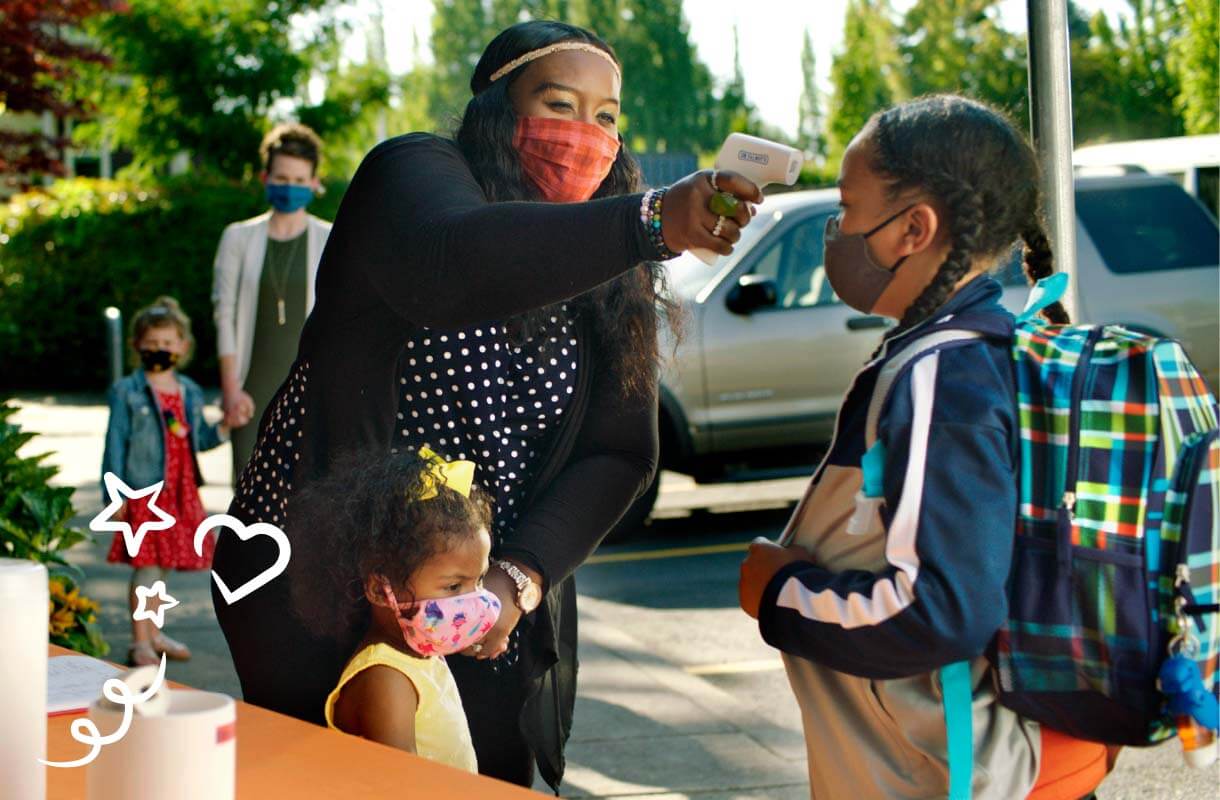Penguin Power: How to Walk on Ice (& Stay Upright)

Well before the first snow storms hit, freezing temperatures can turn parking lots, sidewalks, and streets into winter versions of a Slip ‘n Slide®. While icy slips and falls have provided plenty of fodder for America’s Funniest Home Videos, we want our families (and all families) to stay upright and safe, whether they’re coming in for morning drop-off or navigating their own icy driveways en route to the minivan door.
Most people know icy surfaces are slippery—but far fewer know that there is a proper technique for walking on it.
Luckily, one Arctic animal has a lot to teach us about ambling over ice safely. “You want to walk like a penguin,” says KinderCare Education's Stephanie Kuntz. While adults may feel some mild embarrassment whilst shuffling and waddling along, ice-related slips and falls every winter send way too many people to their local ER.
Children, however, love learning to do the penguin-walk. So next time your part of the country gets a coating of frost, get the whole family outside and practice.
We want you to stay safe out there!
1. How to Walk Like a Penguin: Need to traverse an area that may be slick? Time to adjust your gait to an Arctic shuffle. Here’s how:
- Point your feet slightly outward, penguin-style. This will increase your center of gravity.
- Bend forward slightly so that your center of gravity is directly over your feet as much as possible. Keep your knees flexible and loose.
- Keep your hands out of your pockets and extend your arms away from your body to help you maintain balance.
- Penguins take short steps and so should you: Your goal is to mimic a penguin’s shuffling gait.
- Go very, very slowly. Sure you may feel awkward, but a momentary feeling of mild embarrassment beats a hard fall.
2. Stay Ice Aware
- When the season begins to transition, keep an eye on the weather. If temperatures dip below freezing at night (and if fog, frost, or moisture is present), you’ll want to take extra care, especially in the morning before sun has a chance to raise temperatures again.
- Use ice melt on walkways when temperatures are expected to dip below freezing to prevent ice from forming.
- Scan driveways, sidewalks, and parking lots for dark patches. In cold temperatures, assume that all wet, dark areas are icy.
- Ice often hides under a dusting of snow. If snow or frost is present, assume it’s slick.
- Take designated paths, because these are more likely to have been cleared or treated with de-icer. (No short cuts for the kids!)
3. Dress for Ice Success
- Most folks know to wear shoes with non-slip rubber soles or traction when a snow storm hits, but many slips and falls happen when freezing fog or drizzle forms a slippery sheet of ice on parking lots. “High heels or smooth-soled shoes don’t give any traction,” says Kuntz. If the temperature dipped below freezing the night before and there was even a smidge of rain or frost, head out in winter boots and take sooth-soled work shoes in a separate bag.
- Puffy, bulky coats can provide extra cushioning should you take a spill.
4. Exit and Enter Your Car with Care
- Take extra care getting in and out of your vehicle. You need balance to navigate slippery conditions—which is why so many people slip while entering and exiting their cars. Use the vehicle for support while getting you (and your children) out of the car. This can be tricky if you have children who must be carried. Take your time, go slow (and if you think you’ll need extra help, be sure to call ahead to your KinderCare center to request assistance).




